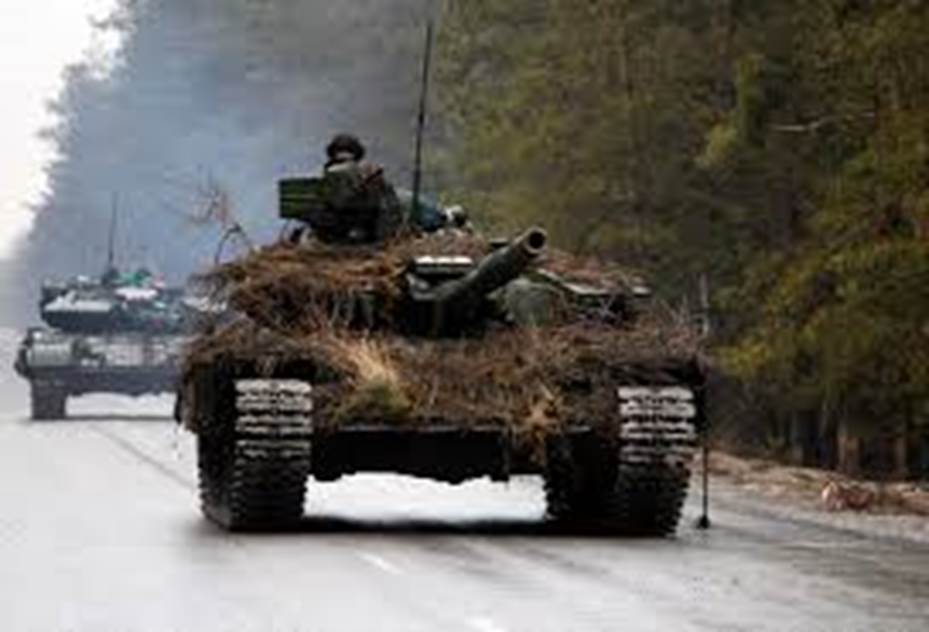
The tank, which has dominated the battlefield since the end of the First World War, has now become exceptionally vulnerable to cheap handheld anti-tank guided missiles – Foreign Policy
Ukraine’s Slow Progress
By Nayyer Ali MD

Ukraine began its summer offensive in early June with hopes of driving south to the sea and cutting the Russian position in Ukraine in two, isolating the Crimean peninsula, and forcing an end to the war on their terms. The Ukrainian army had been bolstered with NATO armor, particularly Leopard II and Challenger II tanks from Germany and Britain, and Bradley infantry fighting vehicles from the US. Critically though, Ukraine was not given much in the way of airpower and had to conduct this offensive without control of the skies.
Last year, after blunting the initial Russian invasion, the Ukrainians slowly pushed the Russians back on several fronts. First in the north near Kiev, then to the east around Kharkiv and finally in the south near Kherson, forcing all Russian forces to withdraw to positions on the east side of Dnieper River. Over the winter the Ukrainians received NATO training and new equipment, and the hope was that the new brigades would have the offensive punch to deal a winning blow against the Russian army.
Unfortunately for the Ukrainians, that didn’t work out. The Russians spent the winter building a line of fortified positions in the south covered by extensive minefields, and these turned out to be formidable barriers. The first armored thrusts by Ukraine were stopped by mines and Russian anti-tank weapons. The tank, which has dominated the battlefield since the end of the First World War, has now become exceptionally vulnerable to cheap handheld anti-tank guided missiles. These weapons in Ukrainian hands stopped the initial Russian invasion when most observers were expecting a quick Russian victory in February of 2022. But in Russian hands they have proven just as problematic for the Ukrainians.
Fixed fortified positions can however be slowly reduced. If Russian artillery is neutralized then Ukrainian engineers can slowly clear minefields, and infantry can advance and clear trench lines and other fortified positions. This is exactly what the Ukrainians have been doing for the last two months, particularly in a key sector in the south. After weeks of slow progress, they appear to have pushed through the densest and strongest Russian defense lines. But will this lead to Ukrainian victory?
The next steps are to slowly and deliberately degrade Russian artillery and infantry until there is not enough force for them to hold the defensive lines intact, and the Ukrainians can achieve a real breakthrough where their armor can surge forward. Because Ukraine has access to much better Western technology, they are winning the artillery war. With the help of drones and with the highly accurate American and European artillery, they are methodically hunting down and destroying Russia’s artillery. More and more, Russia is having to dip into its obsolete storage for weapons built in the 1950’s and 1960’s. Russia is also suffering an ammunition shortage.
This kind of high intensity warfare without much movement is actually rather common. It is similar to the US and British experience in Normandy in the two months after D-Day fighting the Nazis. But a moment came when the Nazis ran out of sufficient force to hold the lines and the Allies broke through and raced all the way across France to the Rhine. This war appears to be moving along those lines. It’s not clear when Russia’s defenses will fail, but relentless Ukrainian pressure will eventually succeed.
For Ukraine there are some other bright spots. They have been able to successfully attack Russian naval assets in Sevastopol, and have damaged the Kerch bridge that connects the eastern end of Crimea to mainland Russia. In addition, even though they are taking losses on the battlefield, the Western armor has the huge advantage of being designed to protect the crews. Even when Russian units hit the Bradleys or Leopards or Challengers Ukraine is using, the trained crews survive and are able to get to safety. The vehicles are easily replaced, but trained crews are valuable assets to be protected.
The one other factor helping Ukraine is the US decision to provide more advanced arms. M1 Abrams tanks, the best tank in the world, have started to arrive in Ukraine. The Ukrainians are also being trained to fly the F-16s and can expect to have them enter service in their Air Force this winter. Lastly, the US has now finally decided to give Ukraine the ATACMS system, which is a long-range rocket that is highly accurate and will cause severe damage to Russia’s supply system and rear support units.
At the start of summer there were high hopes that Ukraine could win a decisive victory and bring this war to an end. But Russian defenses were too formidable. Instead, Ukraine has settled into an attritional conflict and slow gains. But that does not mean that the conflict is “frozen” or that victory is not possible. Russia is scraping the bottom of the barrel in terms of both trained manpower and advanced equipment.
It is hard to predict whether the war ends this year or the next. The autumn rains and mud and the winter’s cold usually mean offensive military action comes to a halt. But because Ukraine is mostly conducting an artillery and infantry war, and vehicles have taken a back seat, it likely means that this Ukrainian offensive will continue despite the weather. The Russian position is inevitably going to collapse, the question is when.

